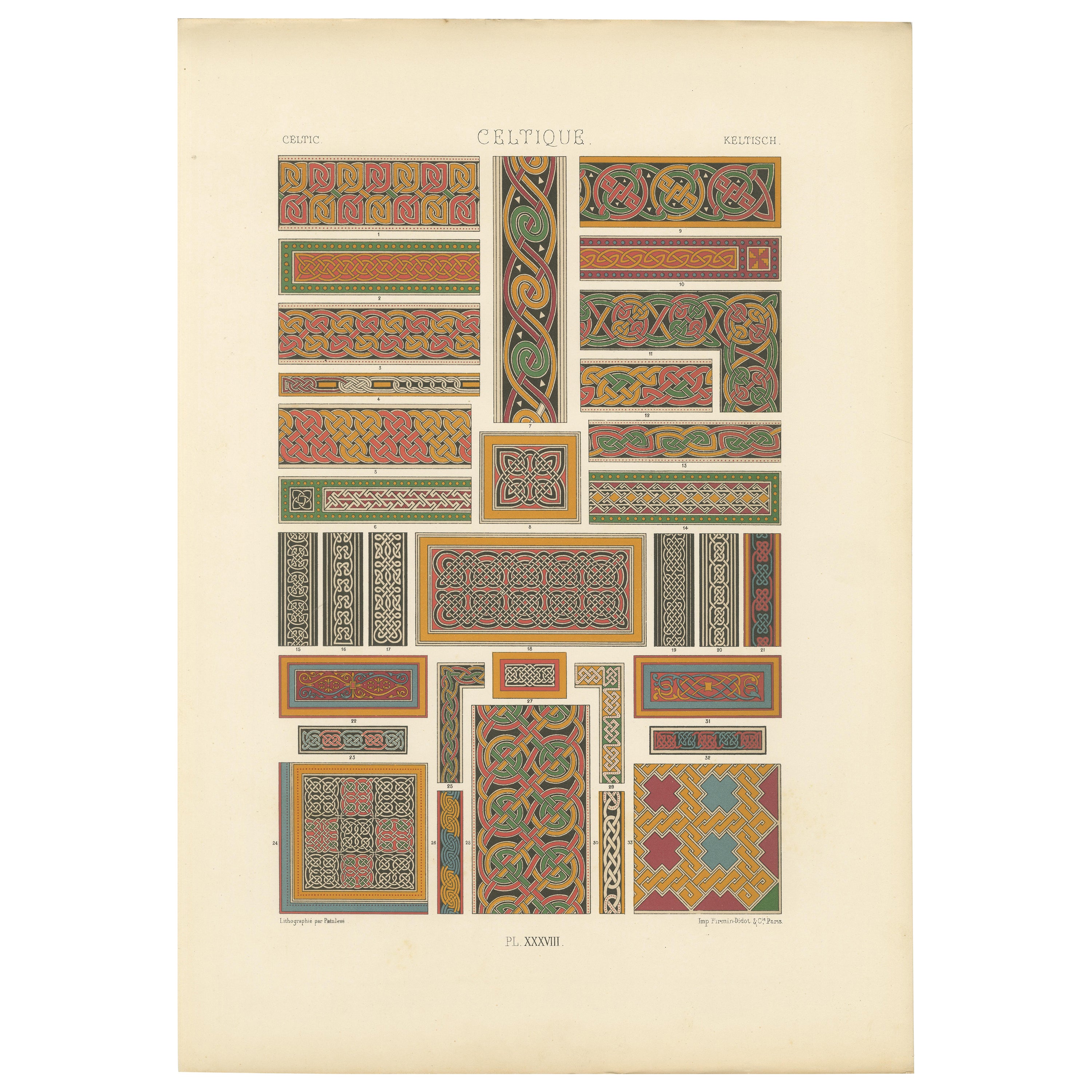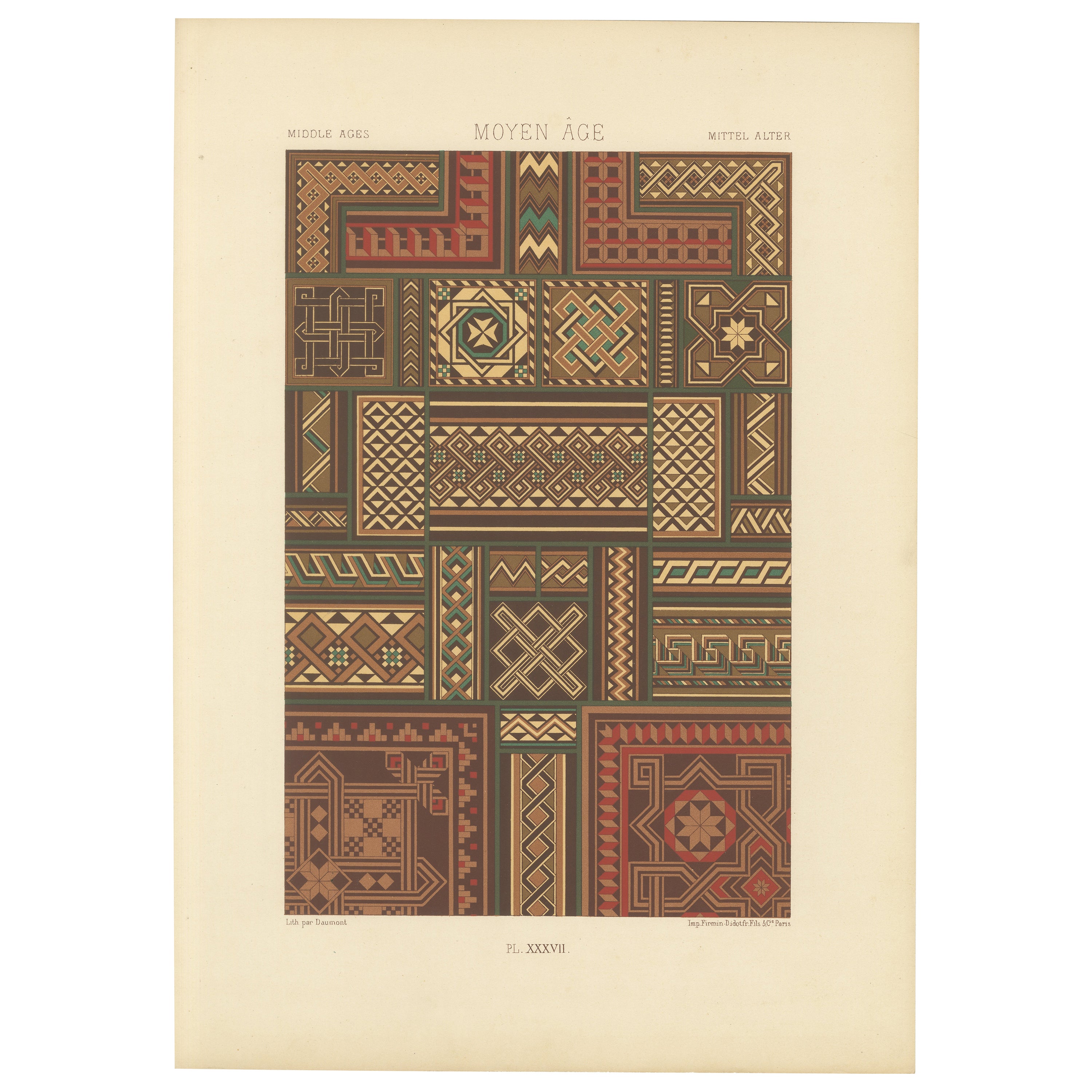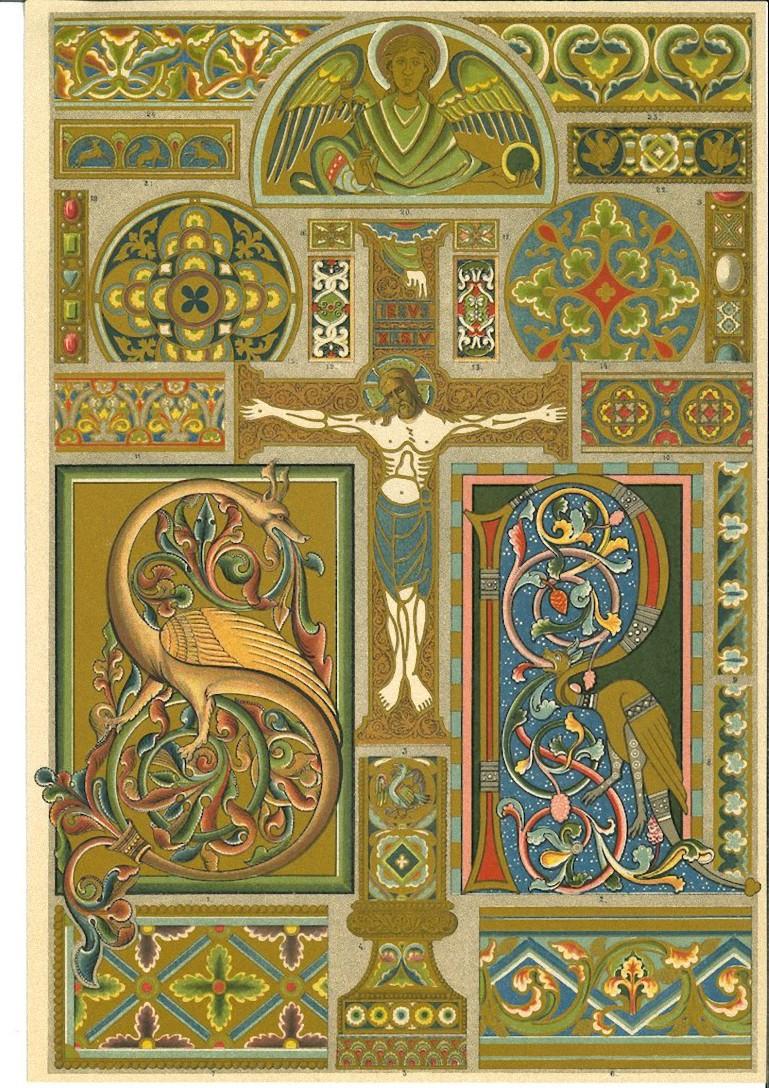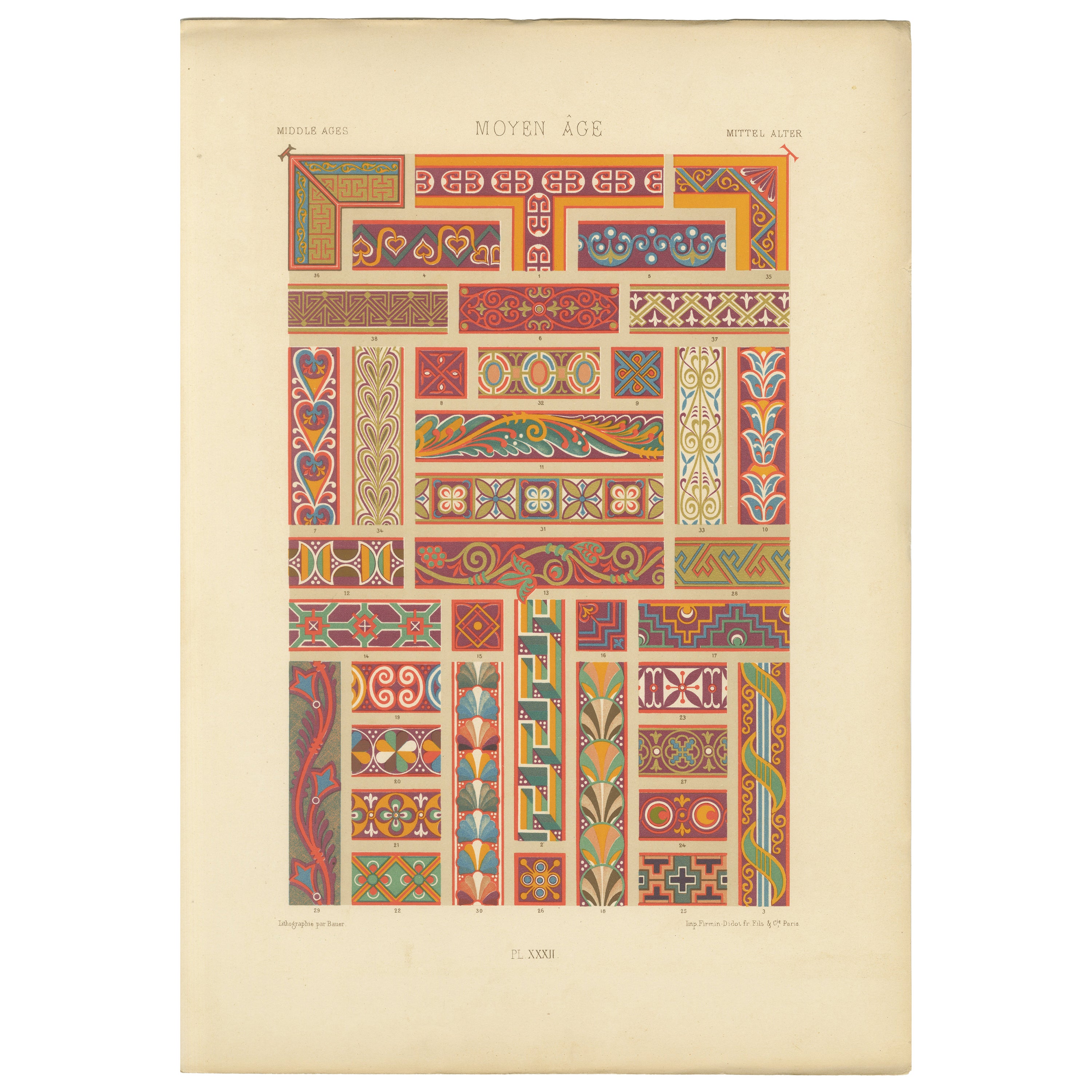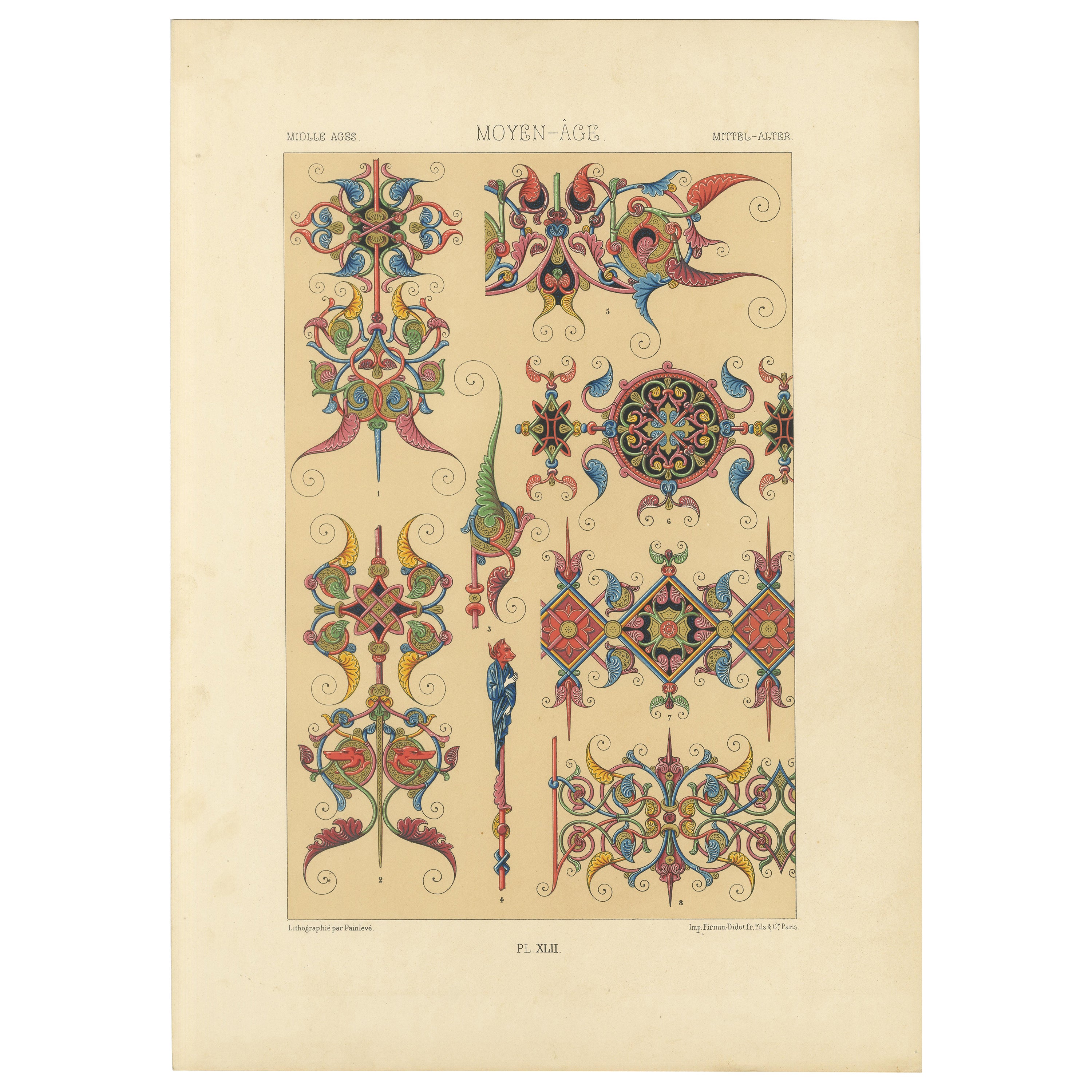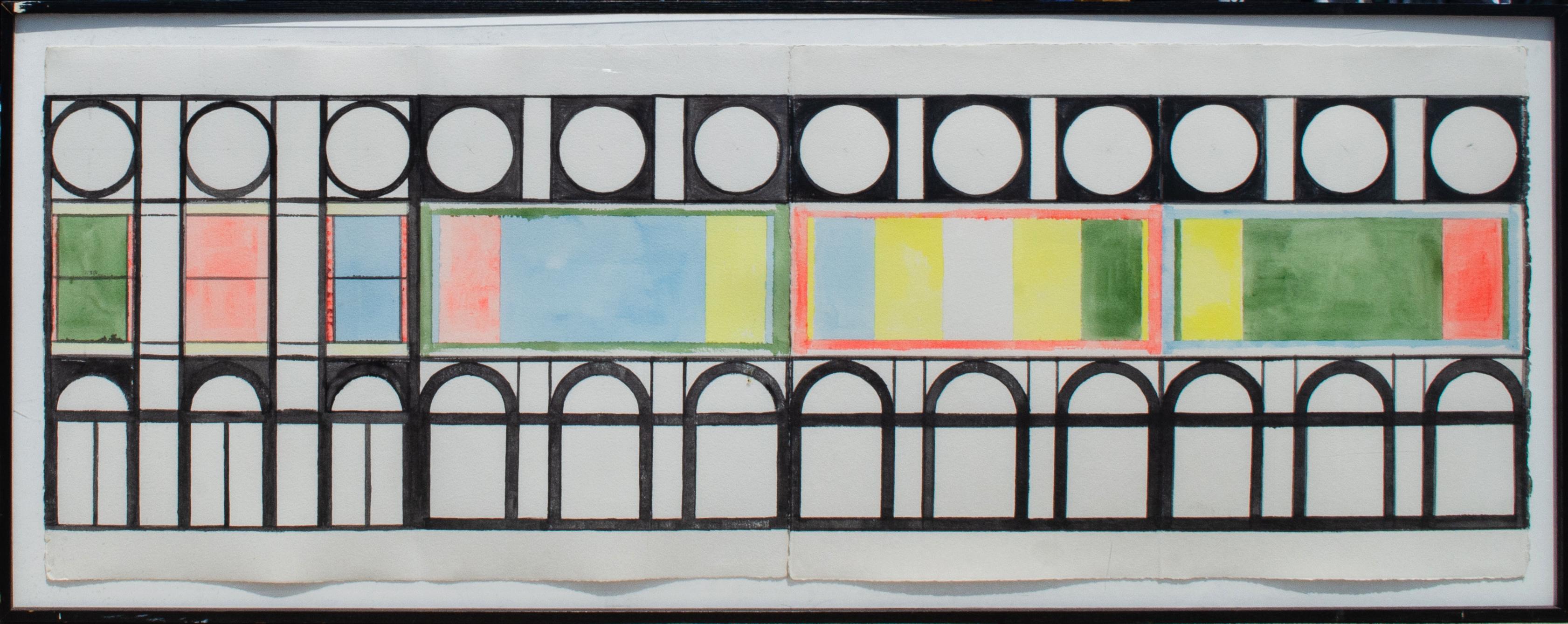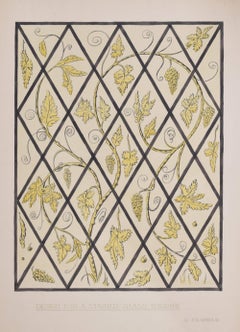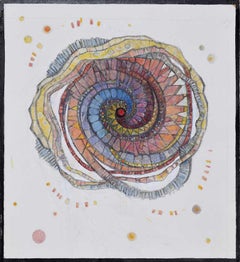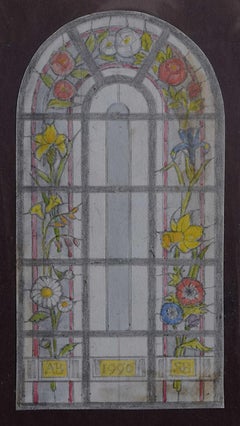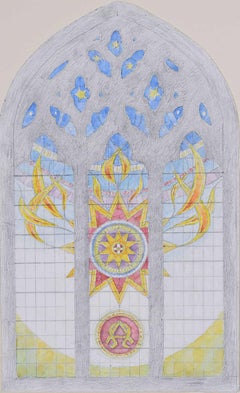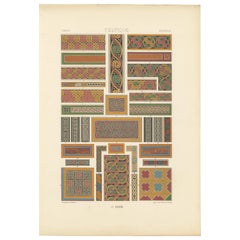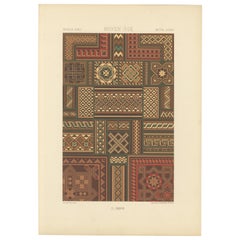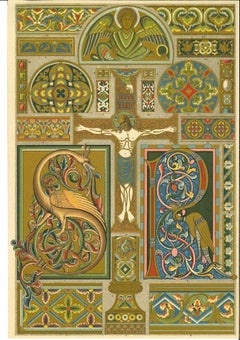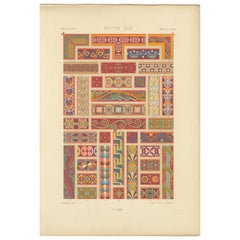Items Similar to Mid-century Celtic interlacing motifs watercolour design by S Clapham
Want more images or videos?
Request additional images or videos from the seller
1 of 9
S ClaphamMid-century Celtic interlacing motifs watercolour design by S Clapham
$406.91
£295
€347.06
CA$563.10
A$626.68
CHF 326.27
MX$7,567.86
NOK 4,091.67
SEK 3,864.84
DKK 2,591.59
About the Item
To see more, scroll down to "More from this Seller" and below it click on "See all from this Seller."
S Clapham (active 1940 - 1960)
Designs for an Interlacing Motif (1949)
Watercolour
37 x 52 cm
Dated 26-2-1949 and signed.
Clapham was an architect based in Stockwell in London.
- Creator:S Clapham (British)
- Dimensions:Height: 14.57 in (37 cm)Width: 20.48 in (52 cm)
- Medium:
- Period:
- Framing:Framing Options Available
- Condition:Very good.
- Gallery Location:London, GB
- Reference Number:1stDibs: LU795312848862
About the Seller
4.8
Vetted Professional Seller
Every seller passes strict standards for authenticity and reliability
Established in 2014
1stDibs seller since 2017
357 sales on 1stDibs
Typical response time: 7 hours
- ShippingRetrieving quote...Shipping from: London, United Kingdom
- Return Policy
Authenticity Guarantee
In the unlikely event there’s an issue with an item’s authenticity, contact us within 1 year for a full refund. DetailsMoney-Back Guarantee
If your item is not as described, is damaged in transit, or does not arrive, contact us within 7 days for a full refund. Details24-Hour Cancellation
You have a 24-hour grace period in which to reconsider your purchase, with no questions asked.Vetted Professional Sellers
Our world-class sellers must adhere to strict standards for service and quality, maintaining the integrity of our listings.Price-Match Guarantee
If you find that a seller listed the same item for a lower price elsewhere, we’ll match it.Trusted Global Delivery
Our best-in-class carrier network provides specialized shipping options worldwide, including custom delivery.More From This Seller
View AllArts and Crafts stained glass window design by S Clapham
Located in London, GB
To see more, scroll down to "More from this Seller" and below it click on "See all from this Seller."
S Clapham (active 1940 - 1960)
Design for a Stained G...
Category
Mid-20th Century Drawings and Watercolor Paintings
Materials
Watercolor
Applique Watercolour Stained Glass Design by Jane Gray
Located in London, GB
We acquired a series of watercolour stained glass designs from Jane Gray's studio. To find more scroll down to "More from this Seller" and below it click on ...
Category
Late 20th Century Modern Drawings and Watercolor Paintings
Materials
Watercolor
Watercolour Design for Stained Glass Panel in a Private House, Jane Gray
Located in London, GB
We acquired a series of watercolour stained glass designs from Jane Gray's studio. To find more scroll down to "More from this Seller" and below it click on "See all from this seller...
Category
Late 20th Century Modern Drawings and Watercolor Paintings
Materials
Watercolor
Watercolour and Pencil Design for Large Stained Glass Window by Jane Gray
Located in London, GB
We acquired a series of watercolour stained glass designs from Jane Gray's studio. To find more scroll down to "More from this Seller" and below it click on "See all from this seller...
Category
Late 20th Century Modern Drawings and Watercolor Paintings
Materials
Watercolor, Pencil
Floral Watercolour Design for Stained Glass Window, Jane Gray
Located in London, GB
We acquired a series of watercolour stained glass designs from Jane Gray's studio. To find more scroll down to "More from this Seller" and below it click on "See all from this seller."
Jane Gray (b.1931)
Stained Glass Design
Watercolour
11.5 x 11 cm
Studio stamp verso
Provenance: the artist's studio sale
This uniquely shaped design for a domestic window centres on a sprawling pair of entangled floral branches that cover the small squared panels in an astute imitation of a trellis. The design is typical of many of Gray’s domestic windows which often focus on floral designs.
Jane Gray A.R.C.A. (b.1931) is a British stained glass artist. She studied stained glass at the Kingston School of Arts (1949-51) and later at the Royal College of Art (1951-55) under Lawrence Lee. Lee was so impressed with Gray’s work that he asked her to work alongside him on the design of ten nave windows for Coventry Cathedral...
Category
Late 20th Century Modern Drawings and Watercolor Paintings
Materials
Watercolor
Modern Watercolour Mosaic Design by Jane Gray
Located in London, GB
We acquired a series of works from Jane Gray's studio. To find more scroll down to "More from this Seller" and below it click on "See all from this seller." ...
Category
Late 20th Century Modern Drawings and Watercolor Paintings
Materials
Watercolor
You May Also Like
Celtic Knotwork and Borders – Antique Print of Interlacing Patterns, c.1869
Located in Langweer, NL
Celtic Knotwork and Borders – Antique Print of Interlacing Patterns, c.1869
This striking chromolithograph from Plate XXXVIII of L'Ornement Polychrome offers a meticulously curated ...
Category
Antique Mid-19th Century French Prints
Materials
Paper
Middle Ages Interlace Motifs – Antique Print of Medieval Knotwork Patterns, 1869
Located in Langweer, NL
Middle Ages Interlace Motifs – Antique Print of Medieval Knotwork Patterns, c.1869
This antique chromolithograph from Plate XXXVII of L'Ornement Polychrome features a rich compilati...
Category
Antique Mid-19th Century French Prints
Materials
Paper
Roman Decorative Motifs - Vintage Chromolithograph - Early 20th Century
Located in Roma, IT
Roman Decorative motifs is a vintage chromolithograph realized by an anonymous artist.
Good conditions.
The artwork represents Roman Decorative motifs in a well-balanced composition.
Category
Early 20th Century Abstract Prints
Materials
Paper, Lithograph
Medieval Ornament Print – Antique Middle Ages Decorative Borders, 1869
Located in Langweer, NL
Medieval Ornament Print – Antique Lithograph of Middle Ages Decorative Borders, c.1869
This vibrant chromolithograph presents a richly detailed compilation of decorative border moti...
Category
Antique Mid-19th Century French Prints
Materials
Paper
Gothic Illumination-Inspired Ornament – Middle Ages Decorative Designs, c.1869
Located in Langweer, NL
Gothic Illumination-Inspired Ornament – Middle Ages Decorative Designs, c.1869
This vibrant chromolithograph, Plate XLII from *L'Ornement Polychrome*, showcases eight exquisite orna...
Category
Antique Mid-19th Century French Prints
Materials
Paper
Geometric Watercolor by David Novros, California School
Located in New York, NY
David Novros (American, b. 1941)
Untitled (Home Savings Study), 1986
Watercolor on paper
Framed: 35 1/4 x 86 3/4 x 1 3/4 in.
Each panel: 30 x 42 in.
From Los Angeles and working fro...
Category
1980s Minimalist Abstract Drawings and Watercolors
Materials
Paper, Watercolor
More Ways To Browse
Celtic Art
Animal Paintings In Watercolour
Tree Watercolor
Chinese Ink Art
Watercolour Interior
China Watercolor
Chinese Watercolour
Chinese Ink Painting
California Watercolor Artist
French Ink Drawing
Pencil Drawings Paris
English Watercolours
Watercolors By Unknown Artists
Fine Art Pencil Drawings
Bright Watercolor
Watercolor Paintings Of A Flower
Watercolor Garden
Antique Pencil Drawings
